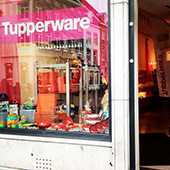1. We disguised this company’s identity to preserve confidentiality.
2. S. Harter, “Authenticity,” in “Handbook of Positive Psychology,” vol. 27, ed. C.R. Snyder and S.J. Lopez (New York: Oxford University Press, 2002), 382-394; C. Morgan and J.R. Averill, “True Feelings, the Self and Authenticity: A Psychosocial Perspective,” in “Social Perspectives on Emotion,” vol. 1, ed. D.D. Franks and V. Gecas (Greenwich, Connecticut: JAI Press, 1992), 95-124; and M. Salmela, “What Is Emotional Authenticity?,” Journal for the Theory of Social Behaviour 35, no. 3 (2005): 209-230.
3. Q.N. Huy, “How Middle Managers’ Group-Focus
Emotions and Social Identities Influence Strategy Implementation,” Strategic Management Journal 32, no. 13 (2011): 1387-1410; and Q.N. Huy, “Emotional Balancing of Organizational Continuity and Radical Change: The Contribution of Middle Managers,” Administrative Science Quarterly 47 (March 2002): 31-69.
i. See, for example, L. Gratton and S. Ghoshal, “Managing Personal Human Capital: New Ethos for the ‘Volunteer’ Employee,” European Management Journal 21, no. 1 (February 2003): 1-10; D. Reay, “A Useful
Extension of Bourdieu’s Conceptual Framework? Emotional Capital as a Way of Understanding Mothers’ Involvement in Their Children’s Education?,” Sociological Review 48, no. 4 (November 2000): 568-585; K. Thomson, “Emotional Capital: Maximising the Intangible Assets at the Heart of Brand and Business Success” (Oxford, UK: Capstone Publishing, 1998); and B. Gendron, “Why Emotional Capital Matters in Education and in Labour? Toward an Optimal Exploitation of Human Capital and Knowledge Management,” Cahiers de la Maison des Sciences Economiques r04113, Université Panthéon-Sorbonne, Paris, France, 2004, http://econpapers.repec.org.
ii. Social capital has been the subject of a well-established line of research in the sociology and management literature at least since James Coleman’s 1988 article on this topic. It is defined as the goodwill available to individuals and collectives. Its source lies in the social relations in the possession of some actors (such as senior executives in an organization). Social capital is traditionally thought of as having three dimensions: (1) structural (for example, network ties and configurations), (2) cognitive (for example, shared language and narratives), and (3) relational (for example, trust, norms, obligations and expectations). We see the goodwill towards individuals and collectives, whose source lies in experiencing positive emotions, as a fourth dimension of social capital. See J.S. Coleman, “Social Capital in the Creation of Human Capital,” in “Organizations and Institutions: Sociological and Economic Approaches to the Analysis of Social Structure,” supplement, American Journal of Sociology 94 (1988): S95-S120; and J. Nahapiet and S. Ghoshal, “Social
Capital, Intellectual Capital and the Organizational Advantage,” Academy of Management Review 23, no. 2 (April 1998): 242-266.
iii. Our prior research on emotional capability examines what we consider the four elements of emotional capital. According to Huy (1999), emotional capability is an organization’s abilities “to acknowledge, recognize, monitor, discriminate and attend to its members’ emotions and it is manifested in the organization’s ... routines related to feelings.” The key element of emotional capability is emotion-eliciting actions that mobilize resources for the achievement of organizational goals. A number of emotional management actions facilitate processes of organizational change and renewal, including the feeling of authenticity (trust), the feeling of fun (playfulness) and the feeling of attachment (belonging). Huy (2008) extended this model by evoking the feeling of pride as a means to increase employees’ receptivity to organizational change. The emotional capability view is largely consistent with and enhanced by growing research in positive psychology. See Q.N. Huy, “Emotional Capability, Emotional Intelligence and Radical Change,” Academy of Management Review 24, no. 2 (1999): 325-345; Q.N. Huy, “Cognitive and Emotional Foundations of Strategy Making: An Emotion-Based View of Strategic Renewal,” in “Strategy Process,” Advances in Strategic Management, vol. 222 (Greenwich, Connecticut: JAI Press, 2005), 3-37; Q.N. Huy, “How Contrasting Emotions Can Enhance Strategic Agility,” chap. 34 in “Research Companion to Emotion in Organizations,” ed. N.M. Ashkanasy and C.L. Cooper (Cheltenham, U.K.: Edward Elgar, 2008); B. Fredrickson, “The Role of Positive Emotions in Positive Psychology: The Broaden-and-Build Theory of Positive Emotions,” American Psychologist 56, no. 3 (March 2001): 218-226; and F. Luthans, J.B. Avey and J.L. Patera, “Positive Psychological Capital,” Academy of Management Learning & Education 7, no. 2 (June 2008): 209-221.
Empirical research on emotional capability, using varying methods such as qualitative case studies as well as measurement of various emotional dynamics in large-scale quantitative studies, has shown both the impact and generalizability of authenticity, pride, attachment and fun beyond the context of radical organizational change. Emotional capability can thus be conceived of as the actions by an organization’s leaders that evoke specific emotions — authenticity, pride, attachment and fun — that, in turn, comprise emotional capital. See J.E. Dutton, M.C. Worline, P.J. Frost and J. Lilius, “Explaining Compassion Organizing,” Administrative Science Quarterly 51, no. 1 (2006): 59-96; Q.N. Huy, “Emotional Balancing”; J. Lilius, M. Worline, J. Dutton, J. Kanov and S. Maitlis, “Understanding Compassion Capability,” Human Relations 64, no. 7 (2011): 873-899; A.E. Akgün, H. Keskin and J. Byrne, “The Moderating Role of Environmental Dynamisn Between Firm Capability and Performance,” Journal of Organizational Change Management 21, no. 2 (2008): 230-252; and A.E. Akgün, H. Keskin and J. Byrne, “Organizational Emotional Capability, Product and Process Innovation and Firm Performance: An Empirical Analysis,” Journal of Engineering and Technology Management 26, no. 3 (September 2009): 103-130.






Comments (6)
Issues and Challenges of Social Media – Sulaiman Abdullatif
The Web Psychologist | The psychology of Enterprise Social Networks - The Web Psychologist
The destruction of home page news | Intranet Blog
Herramientas sociales internas: lazos mas allá de la hora del café | Hablemos de Marketing
Herramientas sociales internas: lazos mas allá de la hora del café
ankit bajpai